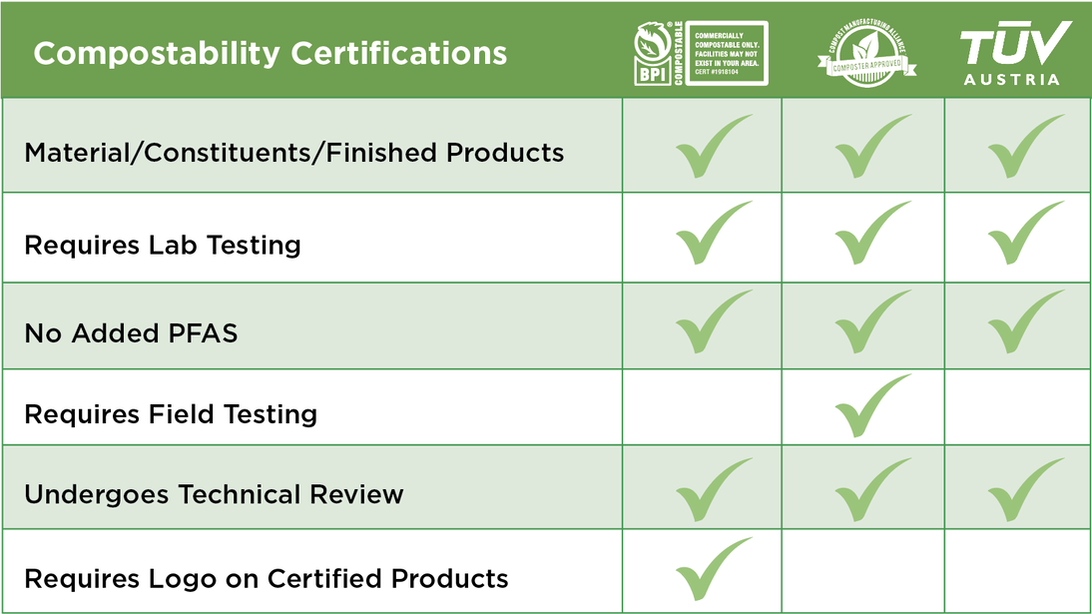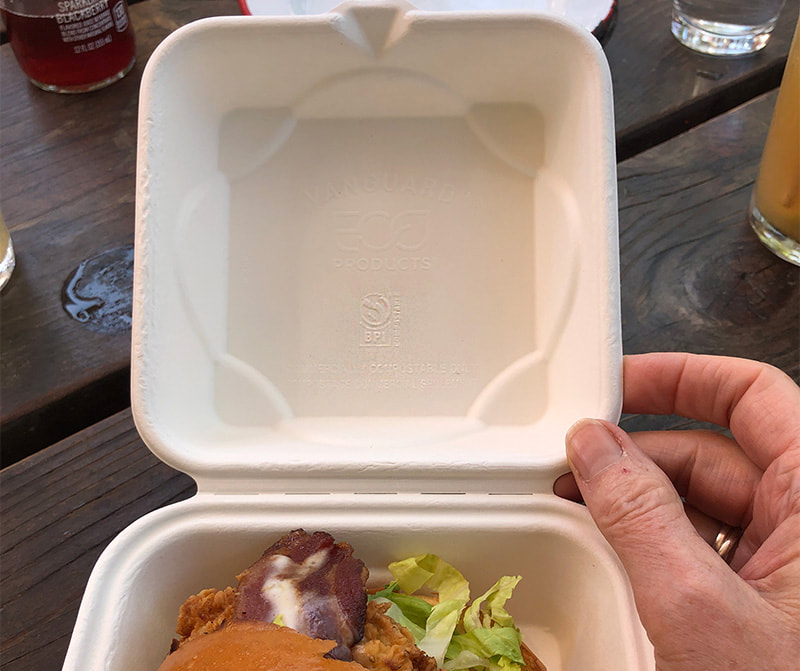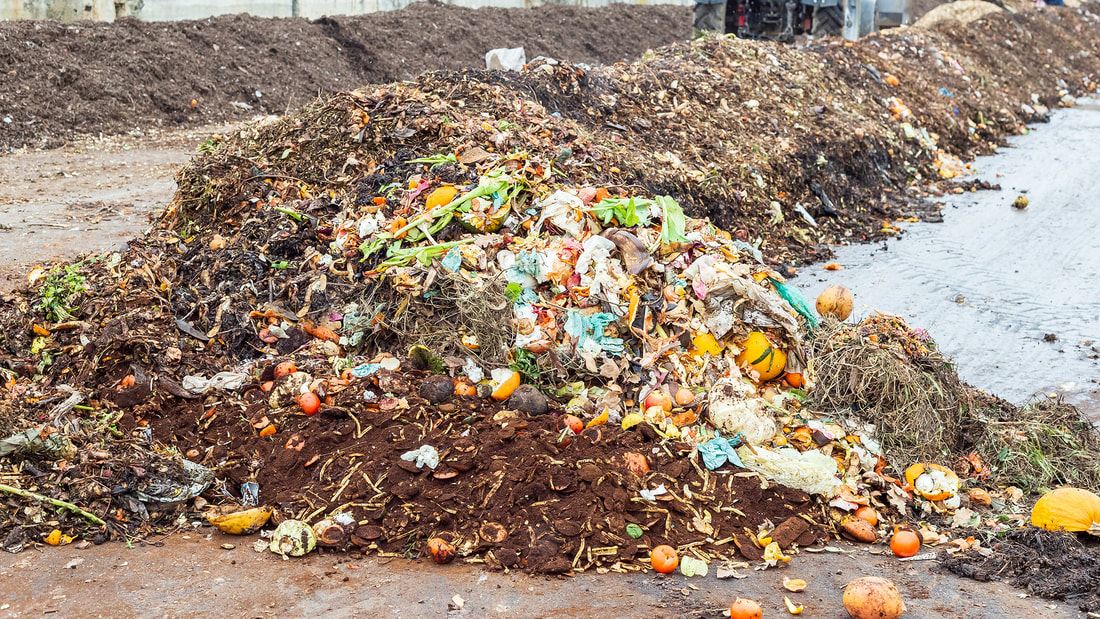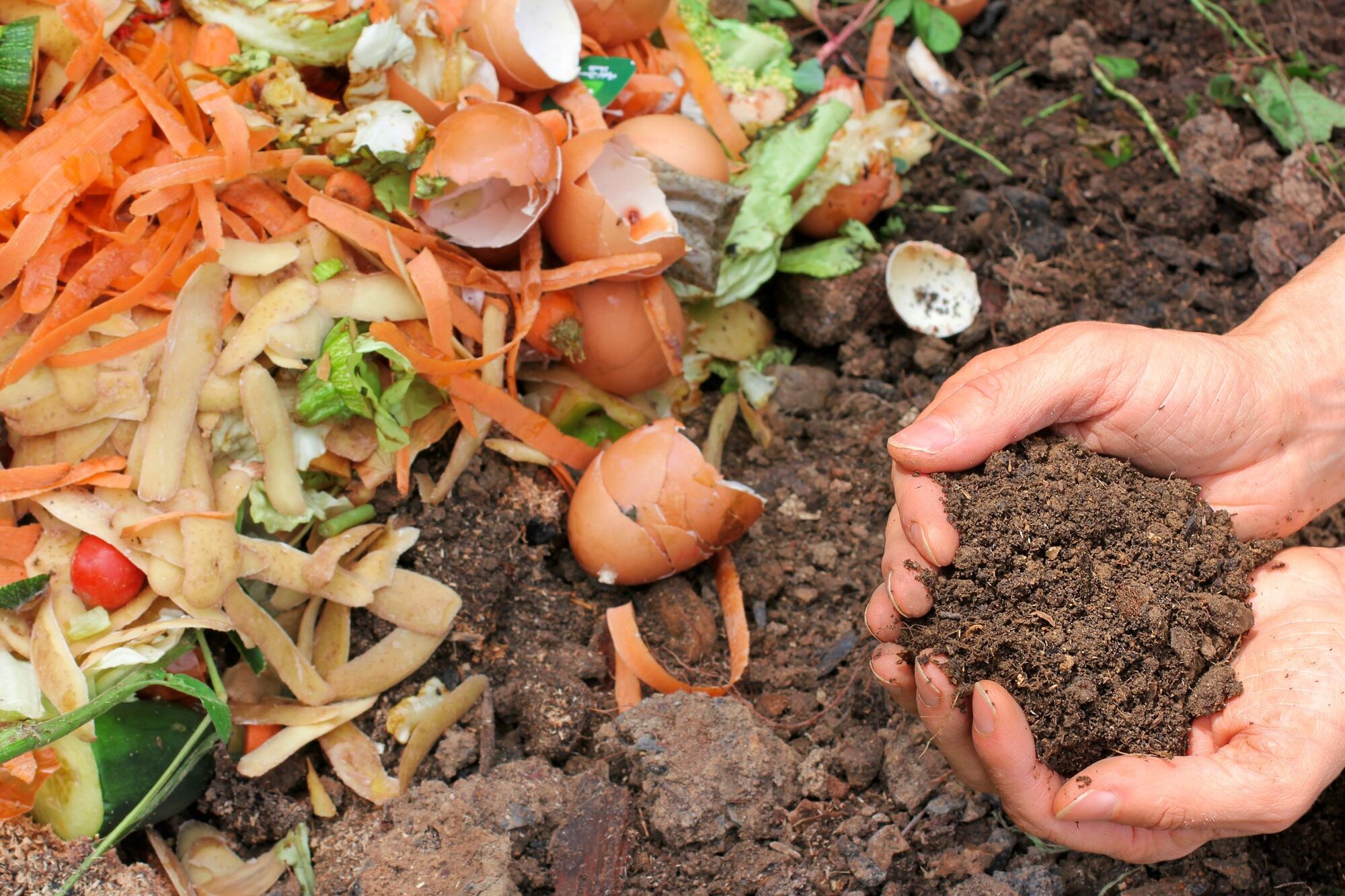World Centric Resource Recovery Team
World Centric is a leading supplier of certified compostable foodservice products, offering over 400 wholesale and retail items made from renewable, plant-based materials.
While the sale of compostables is our ‘bread and butter,’ we also see ourselves as a thought-leader for the industry. We have never shied away from asking the tough questions or doing business a little differently than our competitors. It is because of this history and urge for holistic and transformative solutions that we have started the conversation around third-party labeling for compostable products.
Currently, there are two primary compostable product certifying organizations in the U.S. - the Biodegradable Products Institute (BPI) and the Compost Manufacturing Alliance (CMA). Coming in third is TÜV AUSTRIA Ok Compost, most associated with home compostability certification in the U.S.
BPI, CMA and TUV are the three main certifying bodies for compostable products.
It is fair to say that all certifying agencies believe that consistent labeling is the most effective way to get compostable products and packaging into compost systems and prevent contamination by keeping non-compostable products out. The objective of these organizations is similar, but the path to earn certification on a product diverges slightly.
- BPI certification is received based on successful ASTM Standard lab tests that are verified by a third-party outside of BPI.
- CMA requires and verifies, internally, similar lab results and executes field testing in several different composting systems to determine successful disintegration of products.
- TÜV AUSTRIA certifies through lab testing to European standards, which are a bit stricter for heavy metal acceptance.
- All third-party certifiers will only certify products that contain no intentionally-added PFAS or “forever chemicals,” as quantified by less than 100 parts per million.
This table shows the differences among the top three compostability certifications.
|
As you can see in the table above, the third-party certifiers diverge when it comes to labeling of the products that successfully pass lab review or field testing. At present, only BPI requires the inclusion of their logo to be printed or embossed on all products and packaging that achieve BPI Approval.
CMA and TÜV AUSTRIA do not currently require labeling on products and all maintain certification status, in real-time, on their web databases. The process to obtain third-party certifications is a substantial investment. Costs are incurred by the product producers at every step of the testing, certification, manufacturing and labeling processes. |
Beginning January, 2024, BPI will require the inclusion of their logo to be printed or embossed on approved products.
|
Labeling is thought to be helpful to composters who process these items and to the consumer who decides how to dispose of the product. At the time of writing, there are twelve states proposing or that have already passed legislation addressing specific labeling requirements for compostable products. Requirements range from mandated use of distinguishable colors to printing or embossing an approved, certified logo onto the products, to prohibiting the use of confusing terms related to compostability, like “biodegradable”.
Most composting facilities receive TONS of organic material every day. At that volume, it is nearly impossible to identify acceptable or unacceptable items when these loads are emptied at the site. This raises the question, is legislating labeling of acceptable compostable products the best way to prevent contamination at compost facilities?
Most composting facilities receive tons of organic material every day, making it all but impossible to identify compostable packaging through labeling.
While labeling does have a purpose, and is assumed to be the visual cue that consumers use when determining whether or not to put an item into an compost bin, we should not assume that it will be the magic bullet to both prevent compost contamination and to change human behavior. Perhaps for labeling to be effective, the legislation and certifying agencies should develop strategies to easily identify non-certified and non-compliant materials rather than require additional attempts at cleaning up the stream through additional restrictions on compliant items.
Lastly, if labels are required through certifying or governing agencies, do they really work? If labeling is required, is a logo the right label or is the word “Compostable” an easier message for a consumer to interpret and act upon? See our Effectiveness of Labeling blog post for more: https://www.worldcentric.net/labeling.html
Lastly, if labels are required through certifying or governing agencies, do they really work? If labeling is required, is a logo the right label or is the word “Compostable” an easier message for a consumer to interpret and act upon? See our Effectiveness of Labeling blog post for more: https://www.worldcentric.net/labeling.html
Author Profile
The Resource Recovery Team at World Centric







